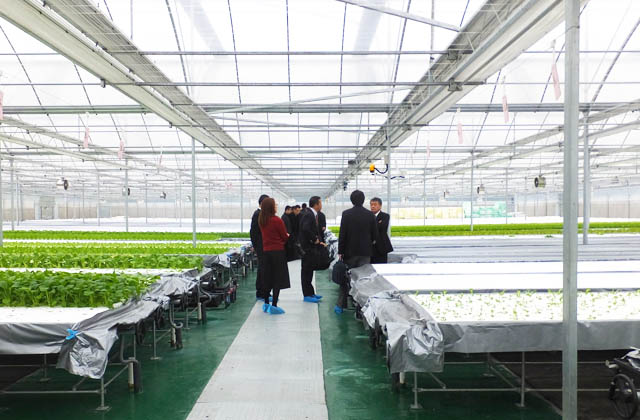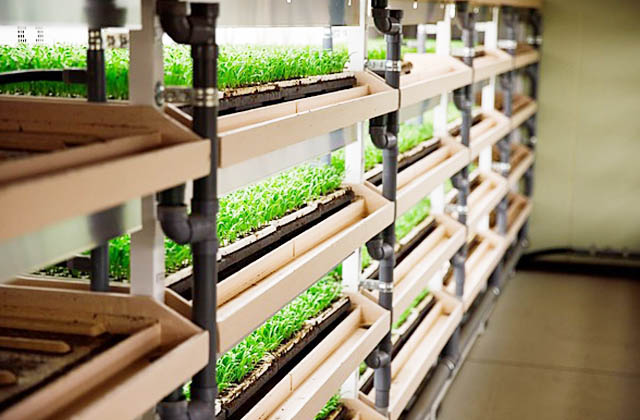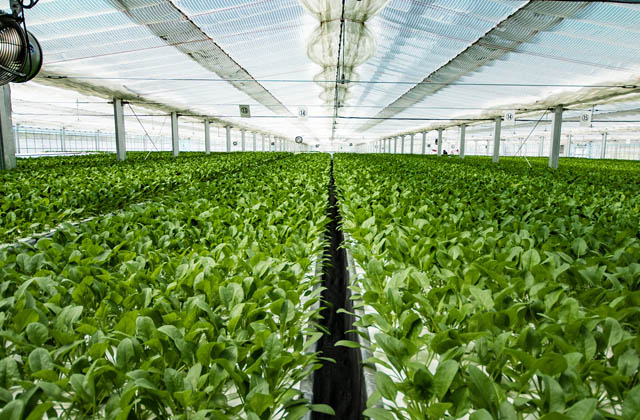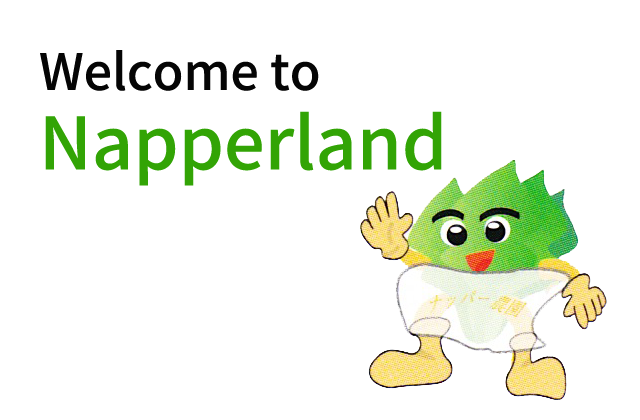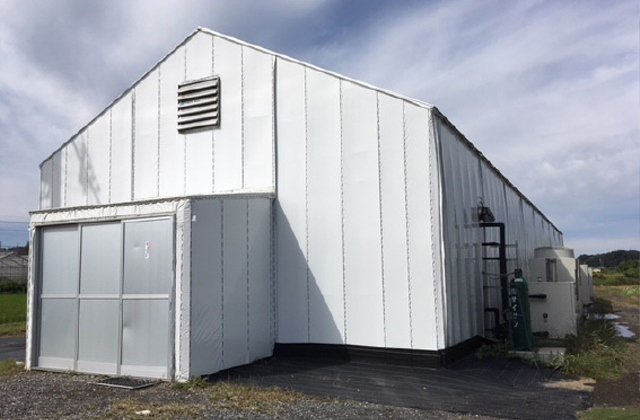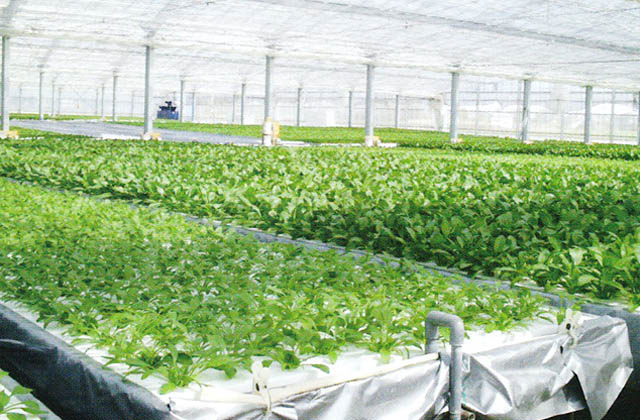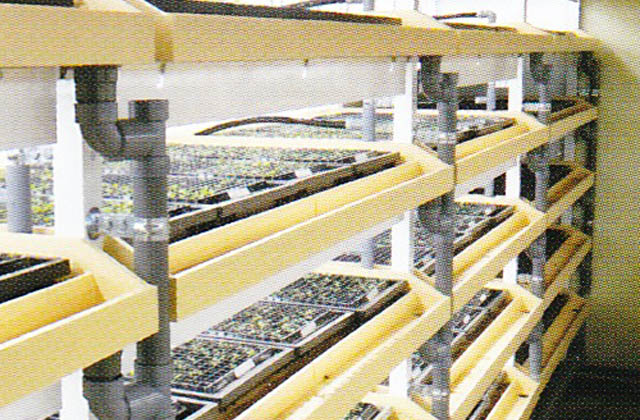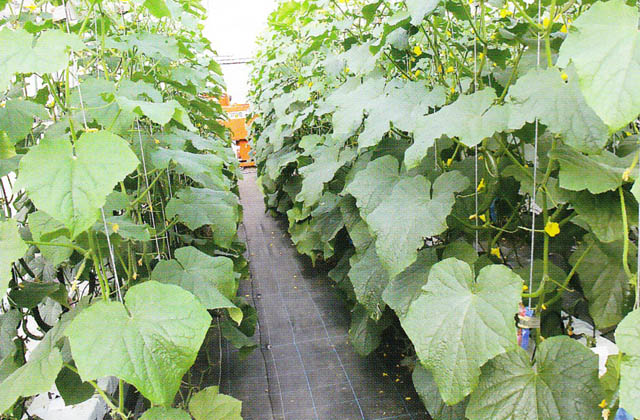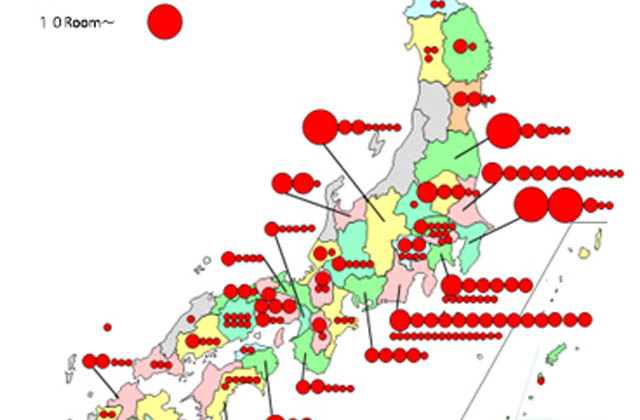Hydroponics system
Farmwork such as planting and harvesting are also clean and easy.
On the other hand, it has a weakness buffering effect against physiological stress of crops and soil diseases (water-borne diseases), so it is necessary to pay close attention to the cultivation.
Types of hydroponics
Nutrient film technique
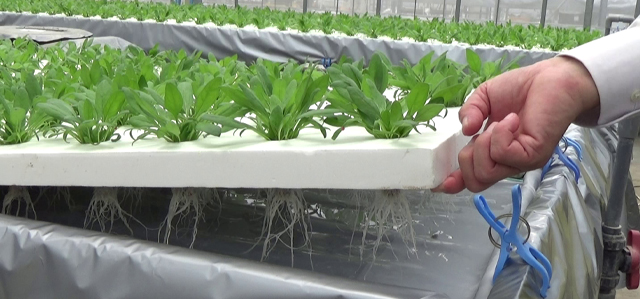
This technology was developed in England in 1973, and is a cultivating system flowing down small amount of nutrient solution to the cultivation bed with gentle slope.
The English name is nutrient film technique, and called NFT hydroponics from the initials.
By flowing and circulating the nutrient solution like a thin film, more oxygen from the air can be dissolved, and crop roots above the surface of the solution can take in oxygen from the moistured air as well, thus preventing oxygen deficiency. In addition, cooling and heating of the nutrient solution is possible at low cost.
Deep flow technique
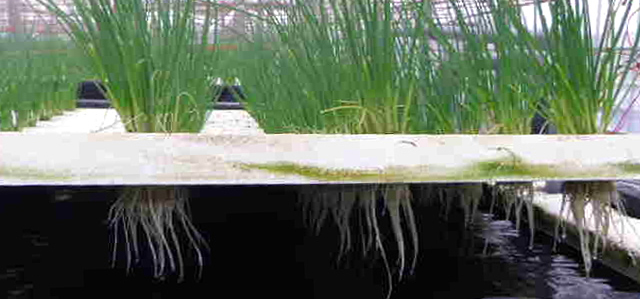
This technology was developed in Japan in 1964 and is a method of cultivation in which the growing bed is kept horizontal and seedlings are planted by floating planting panels on a bed filled with a relatively large volume of circulating nutrient solution.
For comparison with NFT, it is sometimes called DFT (deep flow technique) as Japanese English.
Due to the large amount of nutrient solution, the concentration and composition change during cultivation is gradual, but the dissolved oxygen concentration tends to be insufficient at high temperatures and some crops may suffer from anoxia.
The hydroponic method widespread from Japanese parsley.
Hydroponics system of Napperland.net
The “NAPPER LAND” cultivation system for leaf vegetables and the “KAPPER LAND” system for fruit vegetables are both NFT, focusing on high dissolved oxygen in the nutrient solution and low-cost cooling of the nutrient solution. The circulating nutrient solution is independent and there are many sub-tanks in one field, which is called block management, so that even if a soil-borne disease occurs in one block, no other blocks are affected because the nutrient solution is circulated only in the block.
The “NAPPER LAND” system is able to grow spinach, which is one of the most difficult crops to grow hydroponically, as it belongs to the Amaranthaceae.
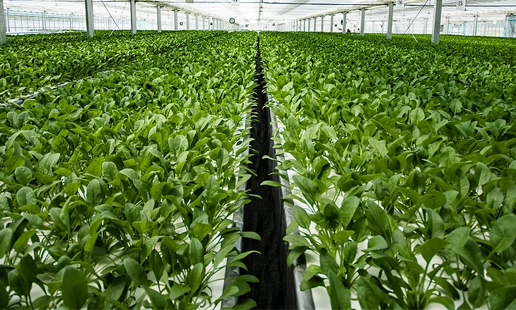
Napperland
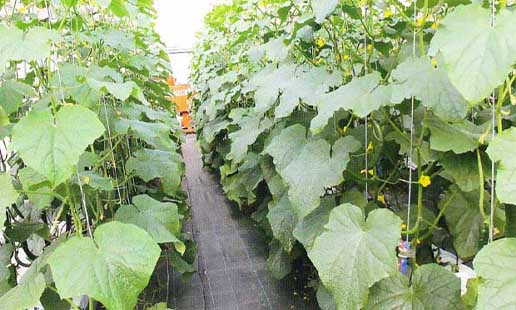
KAPPALAND

